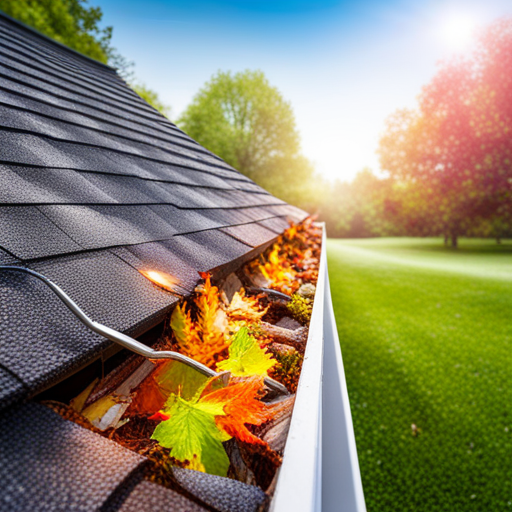Maintaining Your Outdoor Drainage System: Preventing Blockages in Gutters and Downspouts
The outdoor drainage system of your home, including gutters and downspouts, plays a vital role in diverting rainwater away from your property. However, over time, these components can become clogged with leaves, debris, and other obstructions, leading to blockages and potential water damage. To prevent these issues and ensure the proper functioning of your outdoor drainage system, regular maintenance is crucial. In this article, we will discuss effective strategies for maintaining your gutters and downspouts to prevent blockages and protect your home from water-related problems.

Regular Gutter Cleaning
Regular gutter cleaning is essential to prevent blockages and ensure the efficient flow of water. Begin by removing any large debris, such as leaves, twigs, and branches, from the gutters by hand or with a small rake. Use a garden hose with a high-pressure nozzle to flush out smaller debris and unclog downspouts. Pay attention to areas where water may pool or not drain properly, as these can indicate drain blockages. Aim to clean your gutters at least twice a year, in spring and autumn, and more frequently if you have overhanging trees.
Install Gutter Guards
Gutter guards are protective covers placed over gutters to prevent debris from entering while allowing water to flow freely. These guards can be made of various materials, such as mesh, foam, or brush-like bristles. Gutter guards effectively reduce the amount of debris that enters your gutters, minimizing the need for frequent cleaning. However, they still require periodic inspection and cleaning to ensure optimal performance.
Trim Overhanging Trees
Overhanging trees are a common source of gutter blockages, as leaves and branches can easily fall into the gutters. Regularly trim back tree branches that hang over your roof and gutters to minimize the amount of debris that can accumulate. This simple step can significantly reduce the risk of blockages and water damage.
Check Downspouts
Downspouts play a crucial role in directing water away from your home's foundation. Regularly inspect your downspouts for any signs of blockages or obstructions. Use a plumber's snake or a high-pressure hose to clear out any debris that may be causing a blockage. Ensure that the downspouts are securely fastened to the gutters and that they are positioned away from the foundation to prevent water pooling.
Monitor and Redirect Water Flow
Observe the flow of water during rainstorms to identify any issues with your gutters and downspouts. Look for signs of overflowing water, such as water spilling over the edges of gutters or pooling around the foundation. If you notice any problems, consider redirecting the flow of water by adding downspout extensions or installing splash blocks at the base of downspouts. These measures will help ensure that water is effectively directed away from your home.
Schedule Professional Inspections
While regular maintenance can go a long way in preventing blockages, it's also advisable to schedule professional inspections of your outdoor drainage system. A professional plumber or gutter specialist can thoroughly assess the condition of your gutters and downspouts, identify any underlying issues, and provide necessary repairs or replacements. Professional inspections can help detect problems early on and save you from potential water damage and costly repairs down the line.
Maintaining your outdoor drainage system, particularly gutters and downspouts, is crucial for preventing blockages and protecting your home from water-related problems. Regular gutter cleaning, installation of gutter guards, trimming overhanging trees, checking downspouts, monitoring water flow, and scheduling professional inspections are all essential steps in maintaining an efficient outdoor drainage system. By implementing these strategies, you can ensure that rainwater is effectively diverted away from your property, reducing the risk of water damage and maintaining the integrity of your home's foundation.